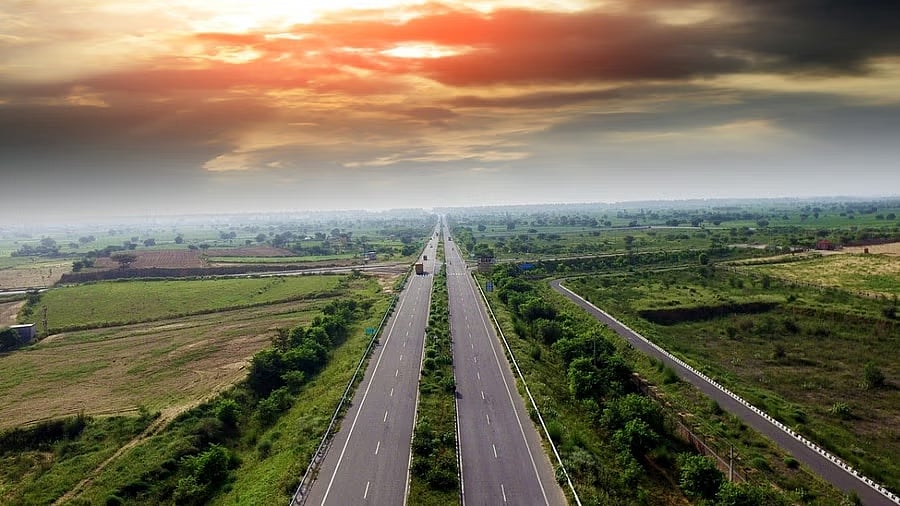
Representative image showing a highway.
Credit: iStock Photo
Ouster of Bangladesh's former prime minister Sheikh Hasina combined with India and Pakistan's recent conflict has had an intense impact on the eastern neighbour's relationship with India severely straining their once-strong ties.
In light of the situation, India realised that completing the Kaladan Multi Modal Transit Transport Project (KMMTTP) that links Mizoram to Kolkata via Myanmar is of the utmost importance.
Recently, the Ministry of road Transport and Highway (MoRTH) gave a green light to the construction of 166.8-km-long, 4-lane, high-speed corridor along National Highway-6 from Mawlyngkhung near Shillong in Meghalaya to Panchgram near Silchar in Assam.
A senior official from National Highways & Infrastructure Development Corporation Limited told Indian Express that "With the help of the Kaladan project, cargo will reach from Vizag and Kolkata to the Northeast, without being dependent on Bangladesh,"
Relationship with Bangladesh
The ouster of former prime minister Sheikh Hasina and India's recent conflict with Pakistan has downgraded ties with Bangladesh. Moreover, even on diplomatic visits, Dhaka has openly made snide comments at India, signaling their wish to not align away from the country.
Recently, Bangladesh’s interim chief adviser Muhammad Yunus called North-East India a 'landlocked' region, claiming Dhaka is the region's only oceanic gateway.
This comment prompted India to look for a different route that will bypass Bangladesh but still be able to connect to the country to the seven sister states. At the moment, the only way to reach the Northeastern states is through Siliguri Corridor.
Colloquially known as the “Chicken’s Neck', the Siliguri Corridor is a narrow stretch of land around the city of Siliguri, West Bengal. Straddled between Nepal and Bangladesh, this 20 km of road is the only piece of land which connects North-east with the rest of the country.
Kaladan project: A new hope
The KMMTTP framework was signed by India and Myanmar in 2008 with the sole aim of creating a transit corridor from the port of Sittwe in the Rakhine State in Myanmar to Mizoram and then to the rest of the North-East.
This project will be able to cut the journey of a traveller by 3-4 days and shave off at least 1000 km of distance.
A report by Indian Express states that as is in its name 'multi-modal', the project combines several modes of transport.
From the port of Kolkata to the port of Sittwe in Myanmar it is a 539 km long journey via the Bay of Bengal, From there on, it is a 158 km journey by boat from the port of Sittwe to the port of Paletwa which is also in Myanmar.
But one shifts gears after reaching the port of Paletwa. From Paletwa to Zorinpui in Mizoram, one has to take the four-lane road which runs for 108 km. After we finish the last leg of Myanmar, a road from Zorinpui will connect to Aizwal and then to rest of the north-east.
Problems with Myanmar
The work for KMMTTP began almost a decade ago and was supposed to be finished in 2016. However, Myanmar's turbulent politics has hindered the progress of the route. Myanmar's majority population Bamar/Burman are at odds with the ethnic minorities in the country.
After a military coup in 2021, ousted the government, the Rakhine State through which the KMMTTP passes came under control of the Arakan Army. Thus, to get the corridor working, India will have to deal with 'army'.
